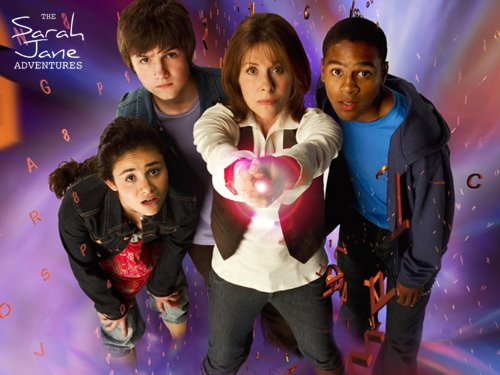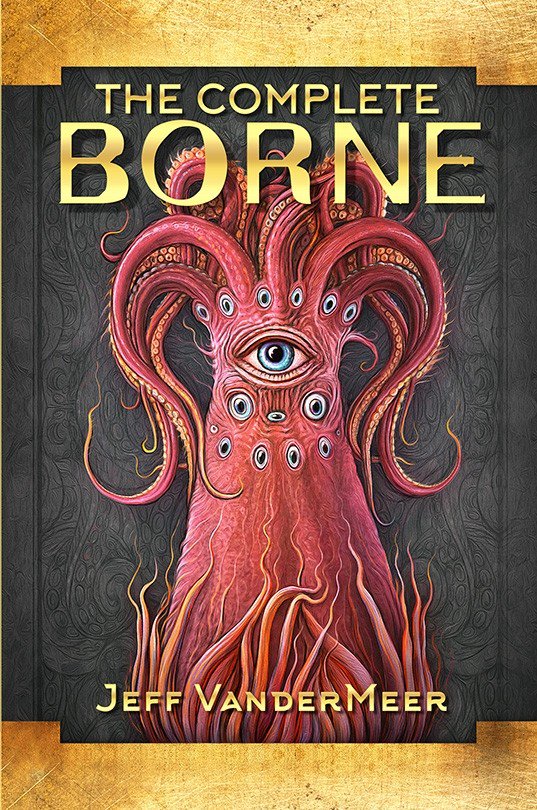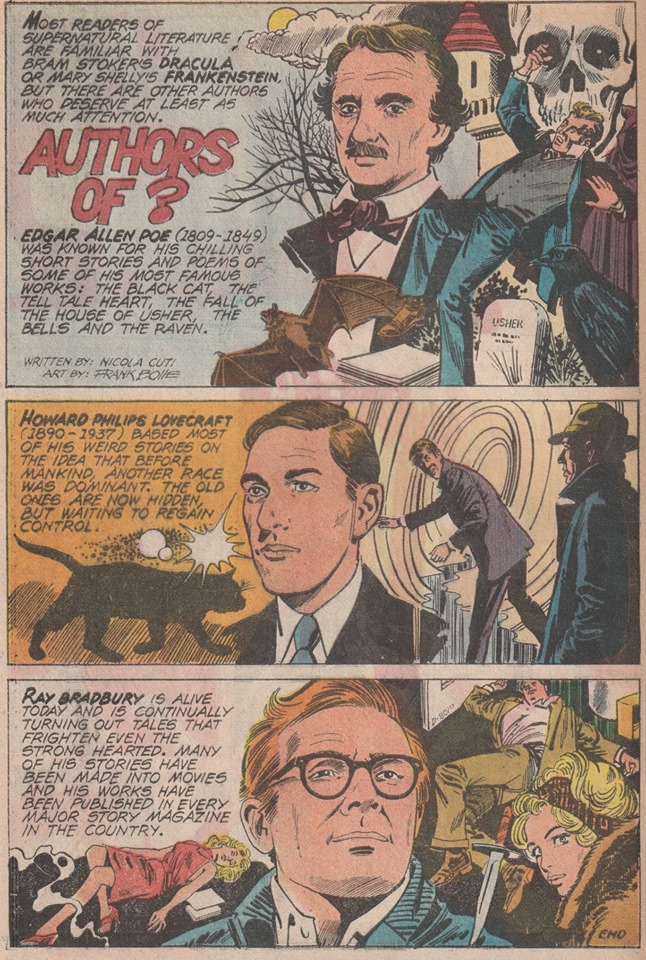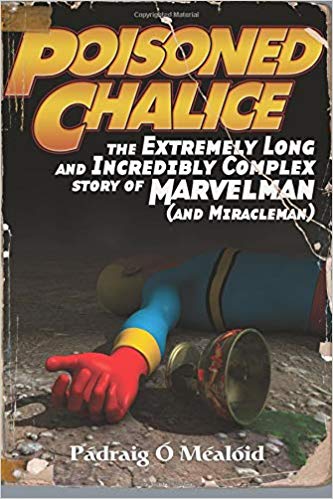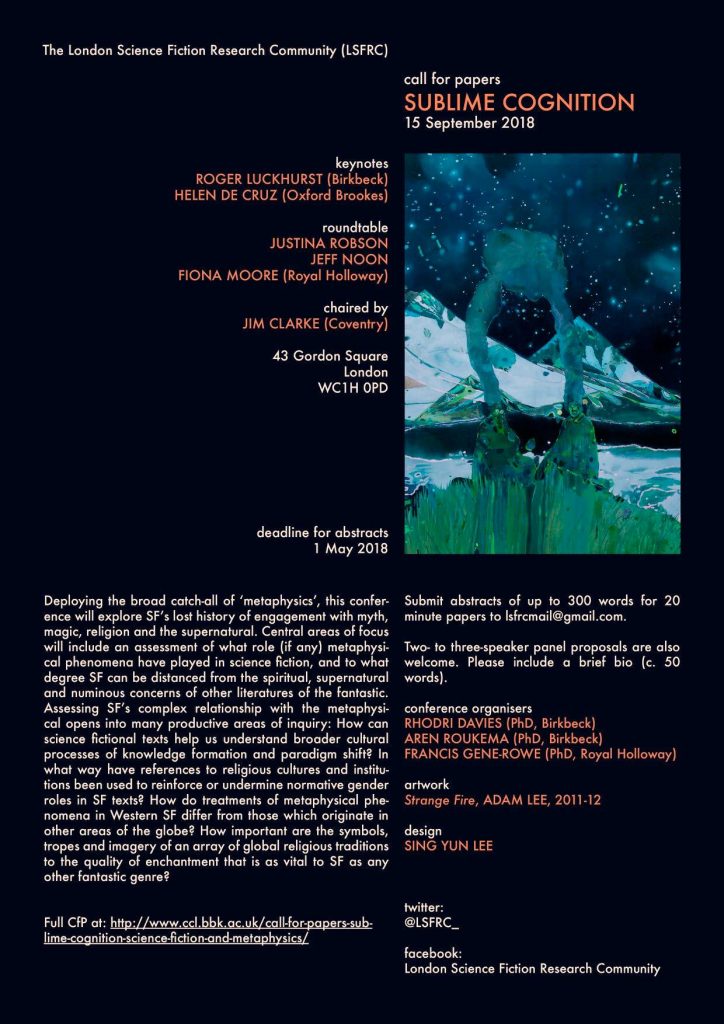(1) MIYAZAKI EXHIBIT WILL KEYNOTE ACADEMY MUSEUM OPENING. The Academy Museum of Motion Pictures in Los Angeles announced the work of Hayao Miyazaki will feature in its inaugural temporary exhibition when the museum opens to the public on April 30, 2021. It will be the first North American museum retrospective dedicated to the acclaimed artist and his work.

With more than 300 objects, the exhibition will explore each of Miyazaki’s animated feature films, including My Neighbor Totoro (1988) and the Academy Award®-winning Spirited Away (2001). Visitors will travel through the filmmaker’s six-decade career through a dynamic presentation of original imageboards, character designs, storyboards, layouts, backgrounds, posters, and cels, including pieces on public view outside of Japan for the first time, as well as large-scale projections of film clips and immersive environments.
From there, visitors move into the Creating Worlds gallery, a space that evokes Miyazaki’s fantastical worlds. The gallery will capture the contrast between beautiful, natural, and peaceful environments and the industrial settings dominated by labor and technology that are also often featured in Miyazaki’s movies. Visitors can view concept sketches and backgrounds that offer insight into Miyazaki’s imagination, including an original imageboard from his first Ghibli film Castle in the Sky (1986) and artworks from subsequent Ghibli features. Other areas explore Miyazaki’s fascination with complex vertical structures, such as the famous bathhouse in Spirited Away, and the underwater world of Ponyo (2008), as well as Miyazaki’s interest in flying, as seen in Porco Rosso (1992) and The Wind Rises (2013). As a highlight of the exhibition, visitors can enjoy a moment of quiet contemplation in the Sky View installation, addressing another frequent motif in Miyazaki’s films: the desire to slow down, reflect, and dream.
Next, the Transformations gallery affords visitors the opportunity to explore the astonishing metamorphoses often experienced by both characters and settings in Miyazaki’s films. In Howl’s Moving Castle (2004), for example, the protagonists go through physical transformations that reflect their emotional states, while in other films, such as Nausicaä of the Valley of the Wind, Miyazaki creates mysterious and imaginative ways to visualize the changes that humans impose on the natural world.
Visitors then enter the exhibition’s final gallery Magical Forest through its Mother Tree installation. Standing at the threshold between dream and reality, colossal, mystical trees in many of Miyazaki’s films represent a connection or gateway to another world. After passing through the installation, visitors encounter the spirits of the forest, such as the playful Kodama from Princess Mononoke, through an array of storyboards and mixed media. Visitors exit through another transitional corridor, which guides them from the imaginative worlds of Hayao Miyazaki back into the museum.
(2) ATTEND A VIRTUAL ANNOUNCEMENT ABOUT THE EXPANSE. Register here for the opportunity to hear news about the ninth and final book in the Expanse series on Wednesday at 11 AM PDT/2 PM EDT. Authors Daniel Abraham and Ty Franck will be answering questions following the announcement.
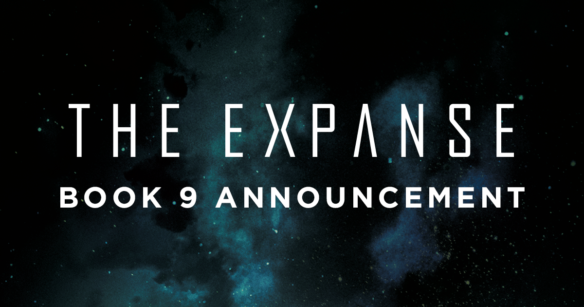
(3) NEW HONOR FOR ATWOOD. Margaret Atwood has won the Dayton literary peace prize reports The Guardian.
Margaret Atwood, whose sweeping body of work includes The Handmaid’s Tale, a depiction of a nightmarish totalitarian future for the US, has won a lifetime achievement award that celebrates literature’s power to foster peace, social justice and global understanding.
The Canadian writer will receive the Richard C Holbrooke distinguished achievement award, officials of the Dayton literary peace prize officials announced on Monday. The award is named for the late American diplomat who brokered the 1995 Bosnian peace accords reached in the Ohio city.
Atwood, a prolific writer of poetry, fiction, nonfiction, essays and comic books , has in recent years drawn a new round of acclaim for her bestselling 1985 novel of a dystopian future in which women are subjugated after a theocratic group overthrow the US government. The television adaptation, starring Elisabeth Moss, saw the book return to bestseller lists around the world, while some readers saw similarities to the leadership of authoritarian Gilead in the rise of US president Donald Trump…
(4) SLF STILL TAKING GULLIVER GRANT APPLICATIONS. The Speculative Literature Foundation is taking submissions for the Gulliver Travel Research Grant until September 30. Full guidelines on the website.
The SLF Gulliver Travel grants are awarded annually, since 2004, to assist writers of speculative literature (in fiction, poetry, drama, or creative nonfiction) in their research. They are not currently available for academic research, though we hope to offer such funds in the future. We are currently offering one $1000 travel grant annually, to be used to cover airfare, lodging, and/or other travel expenses.

(5) HOME (DELIVERED) COOKING. “Why did it take so long?” you’ll ask. Scott Edelman invites listeners to down dumplings with the legendary Irene Vartanoff in Episode 127 of his Eating the Fantastic podcast.

This episode, I was able to totally fulfill the mandate of this podcast, and lose myself in a meal as I sat across a table face to face with a creator. That’s because I’ve known this guest for 46 years plus a few months — and have been in constant conversation with her for almost all of that time. She’s been a part of comics and science fiction fandom several years longer than I have, and worked in comics longer than I did, too. When I started at Marvel Comics on June 24, 1974, she’d ready been there for a couple of months. She has many fascinating things to say about her time in comics — and her decades working in the romance field as well.
I’m of course talking about my wife — Irene Vartanoff — or as she was dubbed by Stan Lee — “Impish” Irene Vartanoff. Her novel Hollywood Superheroine — the final book in her comics-inspired Temporary Superheroine trilogy — was recently published, so this is the perfect time to have a chat about it all.
We discussed how she’d never have gotten into comics if not for her father’s cigar habit, what made a comic book reader become a comic book fan become a comic book professional, the “heartbreaking” advice given to her by Julie Schwartz during her teen visit to DC Comics, why her reputation as a famed letterhack meant she didn’t face the same sexism as other women in comics, what it was like working for Roy Thomas at Marvel and Paul Levitz at DC (and why she respected them both), how critiquing romance manuscripts for 25 years was like being at Marvel all over again, the secret origins of her Temporary Superheroine character, how politics changed Hollywood Superheroine, the final novel in her trilogy, why pantsing works better for her than plotting, the reason she decided to go the indie publishing route, and much more.
(6) LE GUIN DISCOVERY. Sean Joyce-Farley finds worlds of meaning in Ursula LeGuin’s revision to a passage The Left Hand of Darkness, as explained in a post for Library of America, “Are You There Ursula? It’s Me, Sean”.
Knight Library lies tucked into the west side of the University of Oregon campus, just by the cemetery: a dark four-story brick building. Inside, sunlight falls into the Paulson Reading Room through the tall windows at my back. Rigged up in a mask, I look like a harbinger of things to come—but it’s the fall of 2019, and I just have a dust allergy.
There are no pens in the Special Collections, and no water. UO students periodically approach the desk only to learn that they need to take a different staircase to get to the other second floor, which is somehow not connected to this second floor. I take in camera, laptop, notebook, pencil. Grey boxes with my name on them—literally, stuck on in post-its—neatly line the shelf behind the librarian’s desk. The first box is number 77; inside, folders three to five house the handwritten manuscript of Ursula K. Le Guin’s The Left Hand of Darkness (1969). I lift up the lid, and let the light in….
(7) GOT THAT RIGHT. “It’s Not Easy Being a BookTuber” on WIRED is an introduction to an episode of WIRED’s “Geek’s Guide To The Galaxy” podcast which has an interview with Daniel Greene, who makes his living reviewing sf and fantasy books on YouTube. Greene discusses how he gets 20-30 requests from self-published authors to plug their books and how he has to keep reviewing bestsellers to satisfy YouTube’s algorithms.
Daniel Greene makes a full-time living off his YouTube channel, discussing fantasy authors such as Robert Jordan, Brandon Sanderson, and Jim Butcher. Talking about your favorite books all day might sound like a dream come true, but Greene says that building a successful channel is harder than people think.
“For a few years I was doing a video every day of the week, seven days a week, which was insane, while also being a software engineer,” Greene says in Episode 431 of the Geek’s Guide to the Galaxy podcast. “I’m a workaholic.”
(8) MORE SAND. MovieWeb alerted readers to a French-langauge variant of last week’s Dune trailer with some additional shots.
While the majority of the Dune trailer is the same as the one that debuted a few days ago, this version is slightly shorter and has been restructured. The trailer is in French but, while you may not have much idea what they’re saying, there are a few new shots included, giving us a further look at the likes of Gurney Halleck, played by Josh Brolin, who is seen preparing for battle, as well as a little more of Timothée Chalamet’s Paul Atreides enduring the excruciating pain of the Gom Jabbar Test.
(9) MEDIA ANNIVERSARY.
- September 2000 — Twenty years ago this month, the online magazine Strange Horizons posted its first issue. It does short stories, poetry and reviews, essays, interviews, and other material as tickles its fancy. It was founded by writer and editor Mary Anne Mohanraj. Susan Marie Groppi who took over in 2004, won the World Fantasy Special Award: Non-Professional in 2010 for her work as the Editor-in-Chief. Other editors have followed; the current one is Vanessa Rose Phin. Several of the stories first published here have been nominated for Hugos, Sofia Samatar’s “Selkie Stories Are for Losers” and Benjamin Rosenbaum‘s “The House Beyond Your Sky”. It was a finalist for the Best Website Hugo Award in two years, and for the Hugo Award for Best Semiprozine every year from 2013 through 2020. You can find it here.

(10) TODAY’S BIRTHDAYS.
[Compiled by Cat Eldridge and John Hertz.]
- Born September 14, 1927 – Martin Caidin. His Cyborg was the basis for The Six Million Dollar Man and The Bionic Woman. Thirty novels for us, half a dozen nonfiction books about rockets and Space travel; eighty fiction and nonfiction books all told, a thousand magazine articles; an authority on aviation and aerospace. Restored to full airworthiness a 1936 Junkers Ju 52, toured extensively with her. Flew with the Thunderbirds demonstration squadron (U.S. Air Force), honorary member of the Golden Knights parachute demonstration team (Army). Twice won Aviation/Space Writers Ass’n Award for outstanding aviation author. (Died 1997) [JH]
- Born September 14, 1931 – Ivan Klíma, 89. Kafka Prize and Magnesia Litera award. A Childhood in Terezin (in German, Theresienstadt; WW II holding ground for deportation to death camps e.g. Auschwitz; few survived) about his own experience. Biography of Karel Capek (software won’t allow the diacritical mark over the C showing it’s pronounced like ch in English church) translated into English, also memoir My Crazy Century. Penguin Classics ed’n of R.U.R. has his introduction. Three dozen other books. [JH]
- Born September 14, 1932 — Joyce Taylor, 88. She first shows as Princess Antillia in Atlantis, the Lost Continent. Later genre appearances were The Man from U.N.C.LE., the first English language Beauty and the Beast film, the horror film Twice-Told Tales and the Men into Space SF series. (CE)
- Born September 14, 1936 — Walter Koenig, 83. Best known for his roles as Pavel Chekov in the original Trek franchise and Alfred Bester (named in homage of that author and a certain novel) on Babylon 5. Moontrap, a SF film with him and Bruce Campbell, would garner a 28% rating at Rotten Tomatoes, and InAlienable which he executive produced, wrote and acts in has no rating there. (CE)
- Born September 14, 1941 — Bruce Hyde. Patterns emerge in doing these Birthdays. One of these patterns is that original Trek had a lot of secondary performers who had really short acting careers. He certainly did. He portrayed Lt. Kevin Riley in two episodes, “The Naked Time” and “The Conscience of the King” and the rest of his acting career consisted of eight appearances, four of them on as Dr. Jeff Brenner. He acted for less than two years in ‘65 and ‘66, before returning to acting thirty-four years later to be in The Confession of Lee Harvey Oswald which is his final role. (Died 2015.) (CE)
- Born September 14, 1948 – Elizabeth Winthrop, 72. Five dozen books, mostly children’s fiction. Fisher Award (after Dorothy Canfield Fisher; adults choose master list, children vote) for The Castle in the Attic; it and two more ours. Jane Addams Peace Prize for Counting on Grace. Sarah Lawrence alumna. Website here. [JH]
- Born September 14, 1961 — Justin Richards, 60. Clute at ESF says “Richards is fast and competent.” Well I can certainly say he’s fast as he’s turned out thirty-five Doctor Who novels which Clute thinks are for the YA market between 1994 and 2016. There’s another nineteen novels written there. And he had other series going as well including being one of the main scriptwriters for the Jago & Litefoot Big Finish series, the characters being spin-offs from the Fourth Doctor story, “The Talons of Wang Chiang”. And then there’s the Doctor Who non-fiction which runs to over a half dozen works. (CE)
- Born September 14, 1962 – Leigh Cunningham, 58. Lawyer with three Master’s degrees. Her Being Anti-Social (2013) a Best Indie Book. Two novels for us. Ranks Nineteen Eighty-four above The Sound and the Fury. [JH]
- Born September 14, 1964 – Lorie Ann Grover, 56. Firstborn for us (Kirkus starred review); verse novels; board books; The Magic Cup with Howard Behar former president of Starbucks. Illustrations: “I’m putting these up for fabbity publisher types to see my samples…. copyright…. Just ask me if you’d like to share them.” [JH]
- Born September 14, 1972 — Jenny T. Colgan, 48. Prolific writer of short stories in the Whovian universe with a baker’s dozen to date with several centered on River Song. She novelized “The Christmas Invasion”, the first full Tenth Doctor story. She has two genre novels, Resistance Is Futile and Spandex and the City. (CE)
- Born September 14, 1989 — Jessica Brown Findlay, 31. She appeared as Beverly Penn in the film version of Mark Helprin‘s Winter’s Tale novel. She’s Lorelei in Victor Frankenstein, a modern take on that novel, and plays Lenina Crowne in the current Brave New World series on Peacock. Finally I’ll note she was Abi Khan on Black Mirrior’s “Fifteen Million Merits“ episode. (CE)
- Born September 14, 1986 – Rick Griffin, 44. Co-authored, and illustrates, the Hayven Celestia universe, where the admirable geroo and various others suffer under the wicked krakun. Recently Tales of Hayven Celestia (in Gre7g Luterman’s name, the 7 is silent). Four more covers. [JH]
(11) COMICS SECTION.
- The Argyle Sweater find a Storm Trooper on a talk show.
- Off The Mark also has a very clever Star Wars-themed joke.
(12) SOMETHING’S IN THE AIR. “Astronomers see possible hints of life in Venus’s clouds” reports Yahoo! News.
Astronomers have found a potential sign of life high in the atmosphere of neighboring Venus: hints there may be bizarre microbes living in the sulfuric acid-laden clouds of the hothouse planet.
Two telescopes in Hawaii and Chile spotted in the thick Venusian clouds the chemical signature of phosphine, a noxious gas that on Earth is only associated with life, according to a study in Monday’s journal Nature Astronomy.
Several outside experts — and the study authors themselves — agreed this is tantalizing but said it is far from the first proof of life on another planet. They said it doesn’t satisfy the “extraordinary claims require extraordinary evidence” standard established by the late Carl Sagan, who speculated about the possibility of life in the clouds of Venus in 1967.
“It’s not a smoking gun,” said study co-author David Clements, an Imperial College of London astrophysicist. “It’s not even gunshot residue on the hands of your prime suspect, but there is a distinct whiff of cordite in the air which may be suggesting something.”
(13) VENUS IF YOU WILL. By an interesting coincidence, on a day when a paper has been released indicating the discovery of a biosignature in Venus’ atmosphere, James Davis Nicoll offers “Five Science Fiction Books Featuring Floating Habitats” a Tor.com.
Venus is so inconsiderate. It presents itself as a sister world, one that would seem at first glance to be very Earth-like, but… on closer examination it’s utterly hostile to life as we know it. Surface conditions would be extremely challenging for terrestrial life, what with the toxic atmosphere, crushing pressures, and blast-furnace-like temperatures.
That’s at the surface, however. Just fifty kilometers above the surface, there is a region with terrestrial pressures and temperatures, a veritable garden of Eden where an unprotected human would not be almost immediately incinerated but instead would expire painfully (in just a few minutes) due to the lack of free oxygen and the prevalence of toxic gases….
(14) STAR WARS MUSICS HELPS CELEBRATE MILESTONE. [Item by David Doering.] Nice to see the Tabernacle Choir chose Star Wars to celebrate their 110 years of recordings:
Legendary film composer John Williams wrote the music for each of the nine Star Wars saga films, spanning more than forty years from 1977 to 2019. For Star Wars Episode I: The Phantom Menace (1999), Williams composed “Duel of the Fates” for orchestra and chorus, accompanying a climactic lightsaber duel. The words are a fragment of an ancient Welsh poem that Williams had translated into Sanskrit—he then rearranged the syllables himself to make the text essentially meaningless, while still retaining a forceful chant-like power. He intended the choral singing itself to give the scene an explicitly religious feel, as if it were a ceremony of some kind. “Duel of the Fates” went on to become a defining musical feature of the prequel trilogy, a symbol of the saga’s broad focus on the cosmic struggle between darkness and light.
The choir music was also used to demonstrate the first stereophonic recording made back in 1940.
Oh, and BTW, while the media proudly announced that Vinyl records outsold CDs for the first time, this is on revenues, not on units. LPs are still quite a bit more expensive than CDs.
(15) GOING FOR THE JUGULAR, WITH A KICK TO THE GROIN. In a post for This Way To Texas, “Libertarians nominate Lou Antonelli for Congress”, Antonelli spotlighted the political battles he’s been waging.
…The Texas Supreme Court on Saturday, Sept. 5, rejected a Republican attempt to remove 44 Libertarians from the November ballot, according to the Texas Tribune.
Groups affiliated with both major parties have gone to court in recent weeks to remove from the ballot non-major-party candidates perceived to be a threat. In general, Libertarians are believed to peel votes away from Republicans, while the Green Party is thought to siphon votes from Democrats.
The GOP sued because the Libertarians didn’t pay their filing fees. But the state Supreme Court said Republicans missed the deadline to kick them off the ballot.
Antonelli, running in the 4th District, is one of the candidates the Republicans sought to block.
He’s trying to get Republican nominee Pat Fallon to join him in a public forum or debate, meantime trying to score off Fallon for not living in the district he wants to represent.
… Fallon lives in the Denton county portion of Prosper, an outer suburb of Dallas, which is just outside the 4th’s boundaries.
Even Wikipedia, the largest and most popular general reference work on the World Wide Web, notes Fallon’s position: “Fallon’s state senate district includes much of the eastern portion of the congressional district.”
However, regarding the 4th Congressional District, Wikipedia continues: “While candidates for the House are only required to live in the state they wish to represent, longstanding convention holds that they live either in or reasonably close to the district they wish to represent.”
The Libertarian Party candidate in the election, Antonelli said “A number of candidates who lost to Fallon in the district convention seem to feel his victory was due to arm-twisting by himself and Senator Ted Cruz, and they resent it and have told me so,”
“The residency requirement for the U.S. House is in the Constitution, so Fallon has done nothing illegal,” said Antonelli. “But Texas deserves congressional leaders who do better than just skirt the law.”
Antonelli is doing his best to leave no stone unthrown.
(16) THE UNSEEN HAND – AND EVERYTHING ELSE. The Cut introduces “The Designer Who Sent Ghost Models Down the Runway”.
While stuck inside during quarantine this past spring, designer Anifa Mvuemba began playing around with 3-D technology. Soon, an idea struck: What if she held a virtual fashion show in which her feminine, curve-friendly designs glided along on invisible models? She’d been working on her line Hanifa for eight years but had never held a runway show — maybe it was time.
On May 22, she premiered the collection, called Pink Label Congo, on Instagram Live. The digital runway show featured ghostlike 3-D figures strutting sinuously down the runway in the collection.
(17) VIDEO OF THE DAY. In “Using Cuts as a Visual Effect” on Vimeo, David F. Sandberg explains how cutting can be just as effective a way to produce special effects as more expensive CGI. WARNING: Many scenes from gory horror movies.
[Thanks to Cat Eldridge, Contrarius, James Davis Nicoll, Scott Edelman, Martin Morse Wooster, Mike Kennedy, Michael Toman, JJ, John Hertz, John King Tarpinian, and Andrew Porter for some of these stories. Title credit goes to File 770 contributing editor of the day Soon Lee.]

